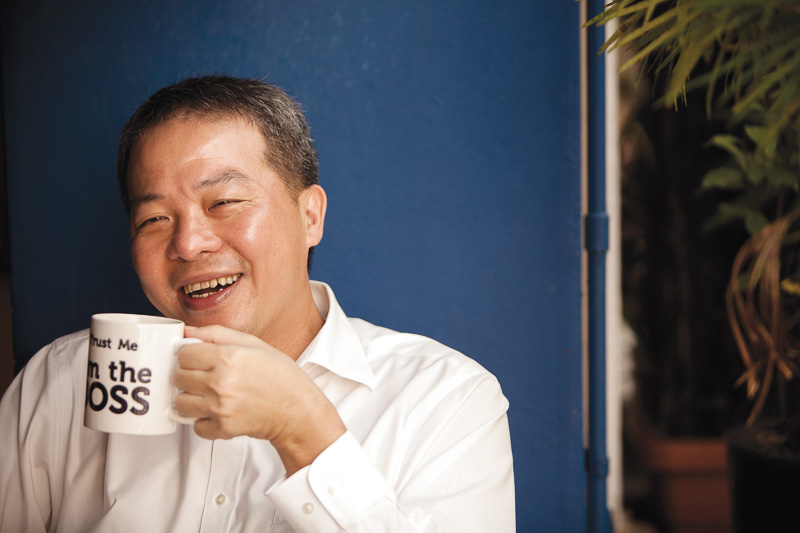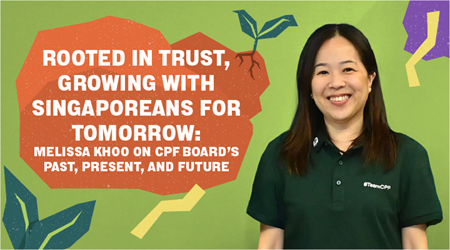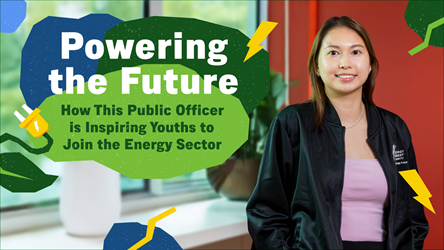“Good Planning Is Not Just About Now”

Everyone who has worked with Mr Ng Lang, CEO of the URA, would have noticed that he seems to be clad in the same white long-sleeved shirt every day. Ask him why and he demurs: “Oh, this is so embarrassing. Please don’t write this!”
It takes a considerable amount of probing before Mr Ng explains: His wardrobe is actually filled with identical shirts. “When I started working, I had a wardrobe of different shirts but after two years, I realised it was a chore making such decisions.” He would rather direct his time and energy towards his responsibilities at work.
“It (wearing identical shirts) grows on you after a while,” says the CEO who admittedly craves simplicity. And so, in his trademark white shirt, Mr Ng sits down at Emporium, a cocktail bar and restaurant near his office, for coffee withChallenge to talk about URA’s work.
Budgeting land
“Our job is almost like the Ministry of Finance’s but instead of budgeting money, we budget land,” Mr Ng begins.
Discipline, in parcelling out 710 sq km of land, is requisite. “We have to make difficult trade-offs and juggle the competing needs of a rather sophisticated society,” he explains. “You have conservation groups that want to keep Bukit Brown, youngsters who say they want more HDB flats that should not be smaller, and people who want more roads and cars.”
The co-owner of Emporium herself would have given Mr Ng an earful had she known who he was. “We have been appealing to the URA to close off the road (Emporium is located at Ann Siang Road) to cars on weekends to no avail,” she later bursts out after he has left and she learns who he is.
With various groups in society having different and sometimes conflicting opinions of how the land should be used, communicating effectively so that citizens understand the decision-making process is an important part of the URA’s work.
Banking land for the future, even if people are complaining, is also part of that discipline.
Ten percent of Singapore’s land is put aside for nature reserves and parks, and when asked if the URA would raze the jungles in the north-west corner of Singapore for development, Mr Ng answers (albeit indirectly): “We do safeguard forested areas for nature reserves and military training. But good planning is not just about now. We cannot consume things ahead of time, and some land areas are kept for future use when your children grow up.”
Ultimately, the goal is to ensure that Singapore is a liveable city, for now and in future, he says.
Creating liveability

Asked to define “liveable”, Mr Ng replies: “A liveable place is where we can sustain a competitive economy, a place with a quality living environment where people can thrive as individuals and live meaningful lives.”
And what does he have to say to those who claim that Singapore, in its pursuit of economic growth, has become less liveable? “The economic part is important because that must work before everything else. Without a robust economy, all your dreams about having a good qua-lity of life would be very difficult to achieve. But it doesn’t mean that it’s something we want to achieve at the expense of everything else. Apart from the economy, we also look at the social and environment aspects.”

The former NParks CEO is proud of how Singapore has scored on the environmental front. This is from a strategic standpoint – “there is no other built-up city in the world that has as much greenery as Singapore, which gives us a competitive advantage [in drawing skilled foreign talent and investments]” – as well as personal.
He talks fondly about the “80-something Ah Ma” who cares for a community garden bursting with golden sunflowers on the rooftop of Block 337, Jurong East Avenue 1, and brings his foldable bike for weekend spins at the park connectors. At home, he has himself created a “garden in the sky” on the balcony of his 9th floor apartment. Featuring fragrant plants like bread flowers, murraya and jasmine, the garden took seed two-and-a-half years ago, after Mr Ng was inspired by his NParks stint. “Birds nested in our garden, which confirmed my belief that if you make an effort to green things up, nature will come back.”
Future Singapore
Since he became the URA's CEO in 2010, Mr Ng has been busy with the concept plan review, which looks at land use in Singapore every 10 years. It has recently been completed and released as the Land Use Plan.
This is what living in Singapore will be like in the years to come: Instead of commuting into the city, you will probably be working nearer to home as the URA develops suburban economic zones in areas like the Jurong Lake District, Kallang Riverside and Woodlands. It will be greener, as more Active, Beautiful, Clean Waters projects and a 150-km round-island park connector route bloom into reality. Expect to see more gardens in the sky as developers integrate vegetation into concrete buildings. Singaporeans can also look out for more mixed-use spaces for living, working and playing, such as the condominium with the mall and offices downstairs.
As this writer bristles at the proliferation of malls in Singapore, Mr Ng observes: “You seem to have a problem with malls. What does it matter if they are providing quality public spaces where people can gather and enjoy themselves? We also balance that with a generous provision of parks.”
One of his favourite malls, he reveals, is VivoCity, simply because families congregate there for a good time at the rooftop park and water playground.
Of late, the URA has gone into thinking about the “software” aspects of a space and what makes people flock there. So beyond building the physical infrastructure, a special URA unit has since 2008 gone into organising place-making activities. “It’s not just about beautiful buildings and iconic structures,” Mr Ng says, “but also about inculcating a sense of ownership and belonging.” That could include getting people on the ground involved in land planning.
Making exceptions

“Software” also implies a closer understanding of the needs of businesses and individuals. Sometimes, exceptions can be made. For instance, while the URA generally does not allow businesses to mar the skyline with waterfront advertisements in Marina Bay, it is willing to relax the rule during big celebrations. “I often tell people that exceptions can be rules in themselves,” explains Mr Ng.
Last September, the URA was asked by The Straits Times to explain why the agency allowed a Haji Lane shophouse owner to keep its graffiti art, although the strong colours of the art contravened the conserved shophouse colour guidelines. Mr Ng says: “What’s been done there is in keeping with the entrepreneurial, lively character of the place, and is welcomed by the community.”
A week after Challenge’s interview with Mr Ng, an article appeared in The Straits Times: In response to feedback, the URA is considering closing off Ann Siang Road to cars on Friday and Saturday evenings.
Emporium’s lady boss would be pleased to know that.

Black coffee without sugar. I cannot reconcile bitterness and sweetness.
Where do you usually have your cuppa?Once a day in my office.
- POSTED ON
Mar 18, 2013
- TEXT BY
Wong Sher Maine
- PHOTOS BY
John Heng
-
Profile
Data at Her Fingertips
-
Deep Dive
Futurists Reveal Our Possible Future









